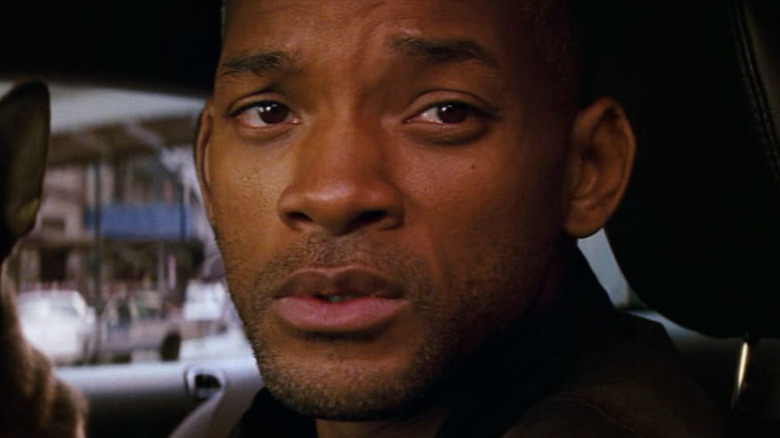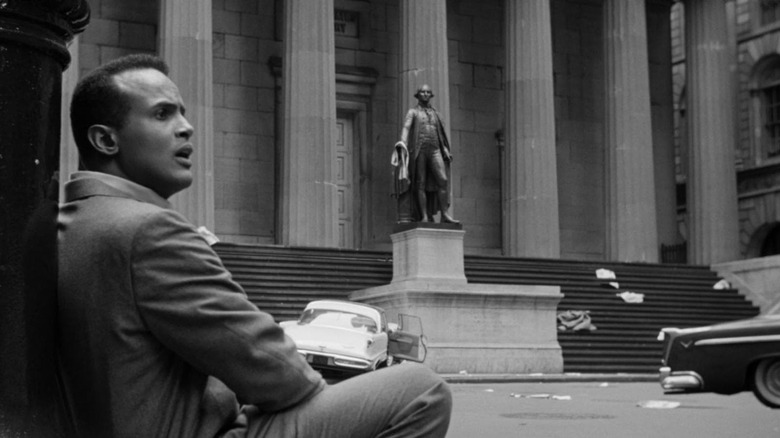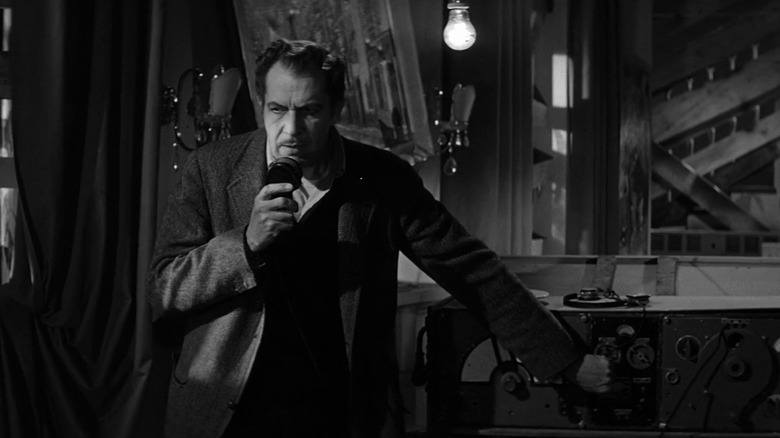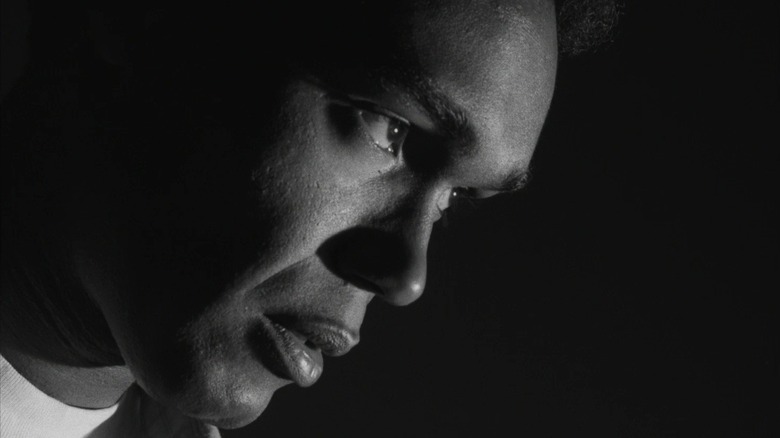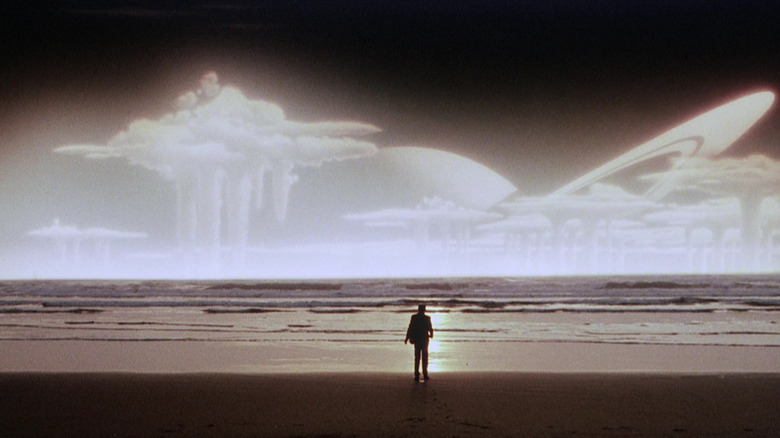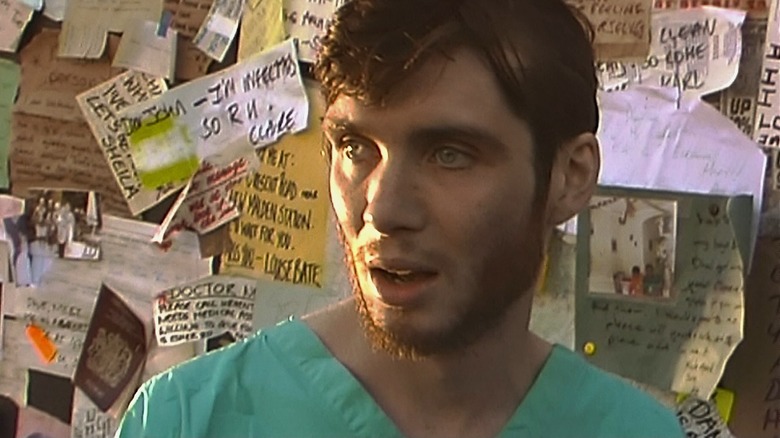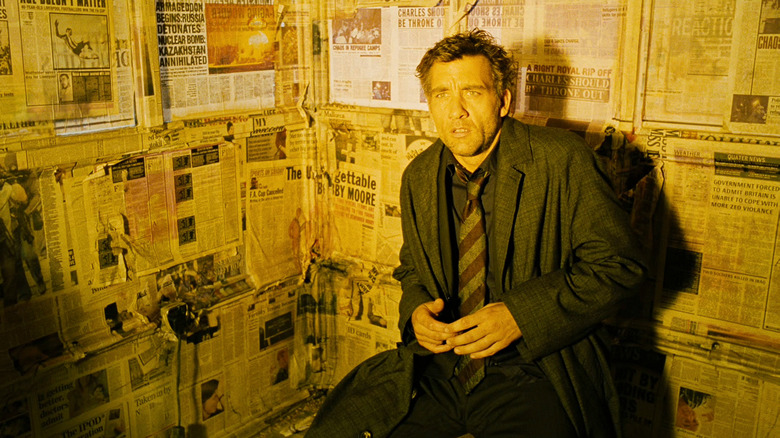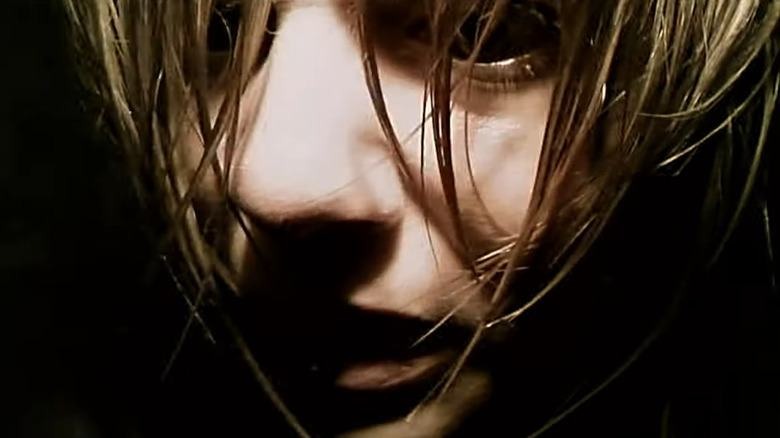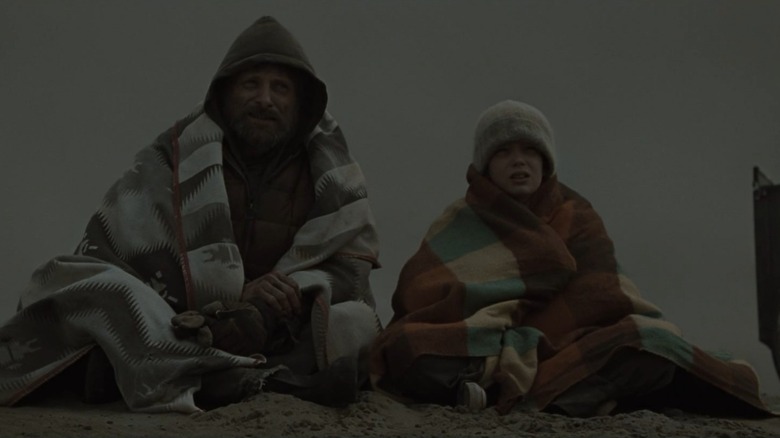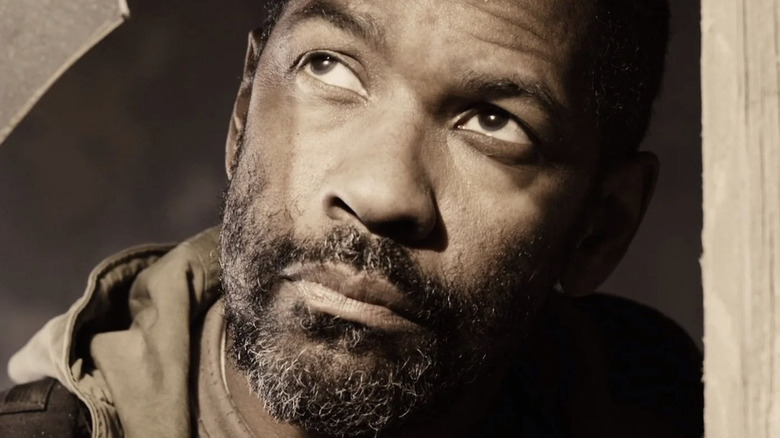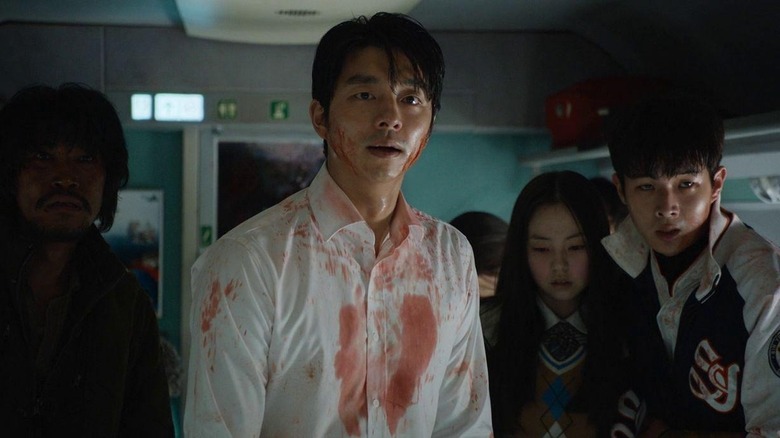10 Epic Movies Like I Am Legend You Should Watch Next
"I am Legend," a 2007 adaptation of Richard Matheson's 1954 novel of the same name, is a uniquely lonely epic. Deer traverse the grass that has overtaken Times Square. There are no impatient car horns, no chatty tourists, no sign of human life at all. Well, except for the stern-faced lone survivor setting his sights on what he hopes will be his dinner.
This man is Robert Neville (Will Smith), a melancholic and determined military doctor looking to cure the virus that has transformed humanity into violent, photosensitive pseudo-vampires. Joined by Sam, his trusty German Shepherd, Robert divides his time between scavenging for supplies and attempting to capture "samples" for his research. But as is the case with most "last man on Earth" tales, Robert is not nearly as alone as he thinks.
While Francis Lawrence's film plays pretty fast and loose with Matheson's text, there's no denying that "I Am Legend" has secured a place within the canon of 21st century apocalyptic tales. This is really saying something, as said canon is already expansive — so, expansive, in fact, that it can be hard to figure out what to watch next. Not to worry: We're here with the answers. Whether you're looking to scratch that early noughties end-of-the-world itch or you want a downer tale about humanity's inevitable demise, we've got you covered. These are 10 epic movies fans of "I Am Legend" should watch next.
The World, The Flesh and the Devil
Deep beneath Pennsylvania, a miner named Ralph Burton (Harry Belafonte) sets off for another boring day at work. Then, to his horror, a cave-in occurs, leaving the usually chipper man alone with his thoughts, the slow drip of water, and the nagging fear of running out of oxygen. When Burton finally manages to claw his way to the surface, he finds himself totally and utterly alone. The cave-in was caused by a nuclear holocaust. Making a home for himself in the city ruins, Burton makes peace with his solitary existence ... until a beautiful blonde survivor named Sarah (Inger Stevens) wanders into his life.
This 1959 film is one of noted screenwriter Ranald MacDougall's few directorial credits. Preceding "Night of the Living Dead" by nearly a decade, "The World, the Flesh and the Devil" is one of the earliest instances of an apocalyptic thriller starring a Black male lead. Released a handful of years after the start of the Civil Rights movement, the film is especially notable for its imperfect attempt to represent an interracial relationship on-screen. This makes it an important predecessor to Will Smith's casting in "I Am Legend," as well as a visually gripping depiction of a desolate New York City in its own right. Audiences who don't mind a little romance with their post-apocalypse would do well to seek out this atomic age gem.
The Last Man on Earth
There have been a number of official cinematic adaptations of Richard Matheson's 1954 novel "I Am Legend." Francis Lawrence's 2007 film of the same name is the most recent. There is also the 1971 adaptation "The Omega Man," which stars Charlton Heston and plays fast and loose with its source material: Instead of a bacterial plague, the vampiric mutants are created by botched biowarfare that causes most folks to asphyxiate.
But if you're interested in watching an even earlier adaptation of Matheson's text, you really can't go wrong with the 1964 film "The Last Man on Earth," which has the distinct advantage of starring horror legend Vincent Price. Matheson has gone on record as saying the film is the most faithful adaptation of his book, which is a bit of a pat on the back, since he helped pen the screenplay (albeit under a pseudonym). While the film visibly lacks the sort of lavish budget many of its peers enjoy, "The Last Man on Earth" is ably carried by Price's performance, which is suffused with loneliness and melancholy. If you have a soft spot for low-budget genre films set in "America" (but were clearly shot in Italy) and you want to see what other adaptations of Matheson's story look like, this is the film for you.
Night of the Living Dead
Are the pallid, lanky ghouls in "I Am Legend" zombies, vampires, or something else? Ultimately, all that semantic fiddling doesn't really matter as much as the vibe the horde gives off: They need to be a swarming crowd of homicidal maniacs. Sure, in the "true" ending of "I Am Legend," we learn that the infected are far more intelligent and human than either we or Neville gave them credit for. But in the film's first act, the creatures seem animalistic, single-minded, and, above all things, violent.
To understand why we find this sort of nightmarish swarm so compelling, you need to watch George A. Romero's "Night of the Living Dead." An essential pillar of end-of-days cinema, a progenitor of zombie films, and one of the most iconic horror flicks to star a Black male lead (Duane Jones) ever made, this 1968 film is a stone-cold classic. It kicks things off with the beginning of the end: The dead have begun to rise and they've got a hankering for human flesh. A gaggle of survivors takes shelter in a dilapidated farmhouse, where they're forced to fend off both the physical and existential threats posed by the undead.
While "Night of the Living Dead" certainly has dread and isolation in spades, it also has its fair share of action-filled moments. Children attack their parents, Molotov cocktails sail through the air, and the dead ceaselessly assault the survivors' fortress. Neville may choose to stay behind to wrangle a cure out of the infected, but fundamentally, his plight is the same: He must survive.
The Quiet Earth
Early one morning, Zac Hobson (Bruno Lawrence) wakes to discover that he is the last man on Earth. Disturbingly, there are no bodies. Everyone appears to have just ... vanished. Unlike many of the other "last men" on this list, Hobson has a pretty solid theory about what has happened. Not only that, he rightfully suspects that he had a hand in ushering in the apocalypse. He's been involved with an American research project that has been trying to create a wireless global energy source with major military applications, and, as he's long feared, something seems to have gone wrong. After his initial attempts to locate other survivors prove hideously fruitless, Zac runs into Joanne (Alison Routledge) and Api (Pete Smith). Together, the trio makes their way into the research facility with the intent of blowing it up and hopefully thwarting any further destruction caused by the renegade experiment. But fixing what has become so broken won't be as easy as they hope.
Drawing heavily on a number of films mentioned on this list, as well as Richard Matheson's 1954 novel, Geoff Murphy's 1985 film is still, resolutely, an existential nightmare all its own. Cryptic and grounded by three rock-solid lead performances, "The Quiet Earth" is an astounding work of science fiction reeking of loneliness, despair, and the unexpected beauty of the end of the world.
28 Days Later
When well-meaning animal rights activists accidentally unleash an aggressive virus from a British research facility, the island nation is drop-kicked back to the Stone Age. Nearly a month later, bike courier Jim (Cillian Murphy) wakes from a coma. As he wanders London's disturbingly vacant streets, he begins to piece together that something terrible happened while he was unconscious. Luckily, Jim is scooped up by a small group of survivors who inform him they're in the midst of an epidemic that turns people into homicidal maniacs. And, unlike other reanimated corpses, these zombies don't shamble — they sprint.
Director Danny Boyle's "28 Days Later" remains one of the most influential works of modern horror, breathing new life, as it were, into the zombie genre. It's also one of the best apocalyptic movies of all time. The family resemblance between "28 Days Later" and "I Am Legend" is strongest during the film's first act, when Jim walks the disturbingly empty streets of downtown London. The animalistic ferocity of the infected in "28 Days Later" also feels akin to the agility and alarming speed of the creatures in "I Am Legend," which move, hunt, and stalk more like house cats than shuffling zombies or sauntering vampires. If you find yourself with a hunger for more brutal survivalism and fast-moving baddies, consider bumping "28 Days Later" to the top of your watchlist.
Children of Men
What's your favorite part of "I Am Legend?" Is it when Robert Neville has to say goodbye — maybe forever — to his wife and child after he opts to stay behind in New York City to help find a cure to the encroaching plague? Is it when he has to put down Sam, his beloved companion and only living link to life before the pandemic? Or is it the opening desolation of the New York City streets, which seem largely indifferent to humanity's departure?
If you answered "yes" to any of these, good news: "Children of Men" exists. A despondent vision of humanity's downfall, Alfonso Cuarón's 2006 film takes place in the frighteningly near future of 2027. No human child has been born in almost 20 years. The direct cause of this sudden infertility is not exactly clear, but whether it's an aftereffect of pollution, radiation, or some kind of divine intervention, one thing is clear: Humanity is staring down the barrel of its own extinction. In the background of the anarchy that now grips the world, everyman Theo (Clive Owen) is entrusted to escort Kee (Clare-Hope Ashitey), a miraculously pregnant woman, to safety.
Full of action and boasting more than enough existential bombshells to keep you up at night, "Children of Men" is significantly less pulp-y than "I Am Legend." But as far as looming extinctions go, both films are keenly interested in the same thing: Our demise, and how we'll handle it.
REC
"Epic" isn't quite the right word to describe "REC," a 2007 Spanish terror trip from co-directors Jaume Balagueró and Paco Plaza. That said, when people do describe "REC," it's usually as a string of expletives we're far too polite to repeat here. So maybe it is "epic," in the sense of it being epically terrifying. Who are we to split hairs over a film so willing to split skulls?
"REC" is told from the perspective of Ángela (Manuela Velasco) and her cameraman Pablo (Pablo Rosso). They run a late-night television program that showcases what goes on at night while most of the population is fast asleep. Tonight, they're hanging around a fire station in the morbid hope that an emergency will allow them to film something genuinely exciting for once. The pair gets far more than they bargained for when they arrive at an apartment complex to perform a wellness check on a disturbed older woman. Her neighbors are worried about her erratic behavior, but even they don't realize how awful the situation has become: The lady is darn near feral. Before you can say "quarantine," the residents, emergency responders, and journalists are forcibly trapped inside the apartment building as officials try to contain the emerging rabies-esque disease.
The gold standard of the found footage genre, "REC" leverages its first-person perspective to depict the claustrophobic, heart-racing experience of an outbreak's inciting incident. While there's plenty of tension and character beats, "REC" is also host to some of the most jaw-dropping action set pieces in zombie cinema. But of course, much like "I Am Legend," the infected aren't really zombies. No — they're something much, much worse.
The Road
If you watched the opening act of "I Am Legend" with its deserted, nature-reclaimed city streets and thought, "Golly, I love how desolate this is, but I wish it was even more depressing," we have the movie for you. "The Road," a 2009 adaptation of Cormac McCarthy's novel of the same name, depicts the arduous struggle of a man (Viggo Mortensen) and his son (Kodi Smit-McPhee) as they journey across a wasteland in search of a better life.
Unlike the sunny, greenery-filled New York City streets of "I Am Legend," the apocalyptic landscape of "The Road" is utterly barren. It's not just that human beings have succumbed to infection and left empty cities in their wake — everything has died. Ash rains down from the sky. A thick, sticky layer of oily soot is omnipresent. This is the aftermath of an extinction event, like an ice age or a climate-shifting asteroid, rather than a plague. The Earth is a lump of coal, and father and son are trapped on it.
While assuredly less high energy than "I Am Legend," John Hillcoat's film is nevertheless an essential contemporary as far as "end of days" films are concerned. Uncompromisingly bleak and full of very few glimmers of anything resembling hope, "The Road" is one of the greatest cinematic bummers ever made. Depending on your taste for apocalyptic fiction, this might be precisely what you're after. There is no heroic quest to find a cure-all for the end times; there are only other desperate, hungry souls trying to stave off death for just a little while longer.
The Book of Eli
In the scorched wasteland of what was once America, a lone wanderer known as Eli (Denzel Washington) ekes out a meager existence. The year is 2043, and something terrible has happened. All the corpses sporting biochemical combat suits give that part away pretty quickly. Amid this catastrophe, Eli is heading west, and while resources are slim and roving gangs of thugs are plentiful, his purpose is clear — to him, at least. After chowing down on stray cats and attempting to stay clear of conflict, Eli finds himself in the sights of a would-be despot, desperate to obtain one particular and ultra-rare book: the King James Bible.
If "I Am Legend" has a true contemporary, "The Book of Eli" has to be it. Its apocalypse is grand in scale, the loneliness is palpable, and it features an intrepid Black man as its protagonist. Part Western, part post-nuclear sci-fi, "The Book of Eli" deserves more praise than its condescending Rotten Tomatoes critical consensus would have you believe. Sure, it's weird, hammy, and holy, both in the biblical and plot-centric sense. But taken as the goofy B-picture it is, "The Book of Eli" is a fine way to spend a Sunday afternoon. And, if you're reading this list, we assume you like your Sundays full of nuclear wastelands, implausible gunfights, and elderly cannibals. Plus, how can you argue with that cast? Michael Gambon? Gary Oldman? Mila Kunis? Denzel Washington? Sign us up!
Train to Busan
"I Am Legend" is a film about the post-apocalypse era. Most films with this focus are light on action and heavy on existential brooding. That's all well and good, but sometimes, you just want to watch a single man take on a horde of aggressive mutants. Enter 2016's "Train to Busan," a locomotive-set South Korean zombie flick directed by Yeon Sang-ho that delivers on action and horror in equal measure.
The film follows Seok-woo (Gong Yoo), a workaholic investment manager whose neglect of his family has created a rift between his ex-wife and young daughter, Su-an (Kim Su-an). When Su-an begs to visit her mother in Busan for her birthday, Seok-woo concedes, joining her on the quick train ride from Seoul. But a sick woman also clambers aboard, whose fast-spreading illness quickly transforms passengers into flesh-munching maniacs. As the undead attack, the promise of a military safe haven dangles in the distance. The survivors must fight their way through the gore-soaked bullet train to make their way to safety.
Both Seok-woo and Robert Neville are guilty of myopically focusing on work. But while Neville's quest to find a cure is morally uneasy, especially if you watch the film's alternative ending, Seok-woo has him beat in the "bad dad" category. Plus, unlike Seok-woo, Neville didn't inadvertently play a part in causing the apocalypse. Either way, if you enjoy flawed men trying to find redemption at the end of the world, look no further than "Train to Busan," one of the best zombie movies of the 21st century so far.
